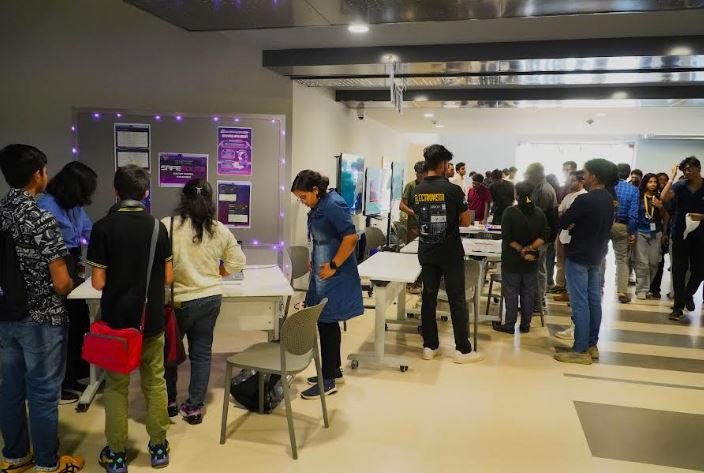
A homeless person sleeps on a storefront during the second wave of the COVID-19 pandemic, in Lyon, France, in 2020.
| Photo Credit: Getty Images/ iStock
There is a moment (around the 40-page mark) in Avtar Singh’s new novel, Into the Forest, that does not directly engage with the COVID-19 pandemic but makes you think long and hard about those scary days and nights in 2020 and 2021. Here, an Indian woman called Ahilya living in Germany is looking at her sleeping teenaged son. A lot is going through Ahilya’s mind; her practically loveless marriage, the growing distance with her son, etc. But when she looks at her son, the emotional maths boils down to a kind of all-too-human fragility, the feeling that everything could end at any given moment, and there is not much any of us could do to reassert control over our own lives.
“My son’s room is unlocked for a change. How many hours I have spent looking at him while he was asleep, at his quiet beauty. When all the wanting of the day before had ended, and he needed nothing more from me. When he was mine alone, and I could enjoy him selfishly, and completely. I thought it would never end. Now he can lock his door to me, and a ritual has become a luxury.”
Also Read | A call to action for a healthier future
That last phrase, “a ritual has become a luxury”, can be applied to the pain and suffering inflicted by the COVID-19 pandemic, which made even everyday things like a walk in the park a risky venture. Now that we have had a few years to process the horror, we are witnessing the emergence of the “pandemic canon”: novels that depict this phase of human history with grace and insight (Claire Pollard’s Delphi, for example, a personal favourite). Avtar Singh’s Into the Forest is a new and important part of this canon.
Pandemic years
The narrative locates itself in the lead-up to and the early part of the COVID-19 pandemic, in a nameless German town where a young Afghan refugee, a janitor named Nabi, finds himself the centre of suspicion. A young German woman named Mia he was close to has vanished, and people are ready to assume the worst (how paranoia amplifies our awful behaviour is a recurring theme). Soon, we learn how Mia’s life intersected with those of other women in the town—with Ahilya, her elderly German friend Liesl (the town’s proudest home gardener), the Bosnian Nejla (who may very well be the classic battered woman), and a female barkeep who listens to all of them. But perhaps the most important character is the forest at the edge of the town, which becomes ground zero for these remarkable women to meet and share their sorrows while walking with their pets and kids.
One of the most impressive things about Into the Forest is the refreshing absence of “filler material”. Just about every action, every character progression has larger implications for the plot. And the characters themselves have divergent and distinctive worldviews, which we learn to navigate gradually in the course of the book. Here, for instance, is Nabi thinking about poverty and how the world views the poor. “Nabi cracks his shoulders. He is unconvinced that there is a world anywhere where there wouldn’t be poor people in boats crossing the open sea in hopes of a better life. His opinion, shaped by the things he has seen, is that only rich people want poverty itself to end. Poor people mostly just want their poverty to end. When they aren’t poor, anymore, is when they can start thinking of the lives of others.”
Into the Forest
By Avtar Singh
Context
Pages: 168
Price: Rs.499

At its core, Into the Forest is a book about isolation and loneliness and the endless ways in which they affect us.
| Photo Credit:
By special arrangement
At its core, this is a book about isolation and loneliness and the endless ways in which they affect us. The idea of a “social contract” between people—even deeply insular, individualistic people—is explored beautifully through the device of a police investigation (as well as through the social restrictions associated with COVID-19). Can a married couple in their 70s deal with isolation better than a much younger couple in their early 30s? Will aloof, grown-up children get closer to their parents or drift even further apart? Under what circumstances do “being alone” and “being lonely” start to converge? Into the Forest is deeply interested in these questions, and the pandemic years provide Avtar Singh with the perfect context for his quest.
There is also an unmistakable Decameron-like feel to the way the plot unfolds, with COVID-weary characters from around the globe taking up the narratorial baton consecutively. This feeling is strongest when we are following Nabi as he goes about his janitorial duties at the hospital and takes a moment to look long and hard at his fellow immigrants. It is a poignant moment but also an educational one as he realises that in the face of the greatest atrocity they have ever faced, even “well-meaning” men choose the most conservative options. The same colleagues who were warm and friendly before the pandemic now do their best to avoid Nabi. The virus becomes a vehicle for paranoia.
Also Read | Pandemic in perspective
“Most of the others doing the work he did were immigrants as well. Afghans, Filipinos, Syrians; Europeans from the less privileged parts of that continent. They took comfort in each other’s stories of their new lives. Now, everything is different. They are surrounded by sickness and consumed with stress. When they are free, there is no hanging around the hospital, or with the other workers. Escape is paramount. Get away, go home, scrub the contagion off yourself.”
With great dialogue and impeccable character development, Into the Forest grows on you quickly. Without giving too much away, I can say that it also has one of the most surprising and well-executed third acts I have come across in Indian literature in the past few years.
Aditya Mani Jha is a writer and journalist working on his first book of non-fiction.


